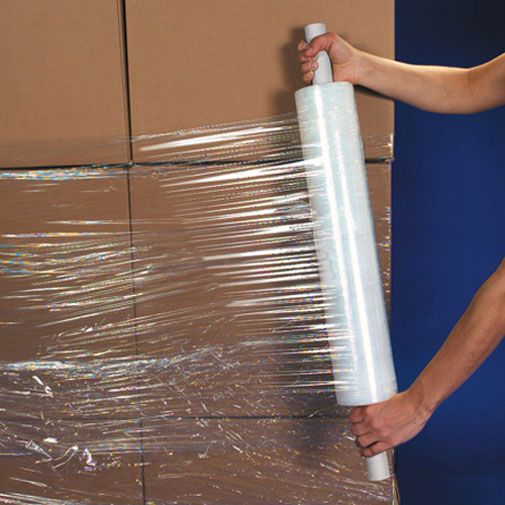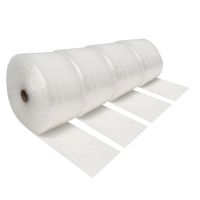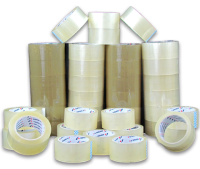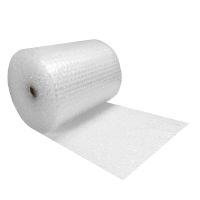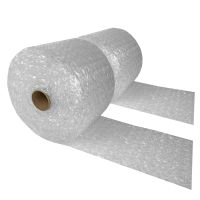Planning Ahead and Staying Organized
No need to be scared or overwhelmed walking down that weary brick road, that is moving. It's a significant time that everyone eventually has to go through and can be made much simpler with the help of appropriate moving supplies. Planning ahead and staying organized is always easier said than done when it comes to moving, but to say its unfeasible is simply just not true. With a multitude of moving supplies, you can seize the opportunity as well as avoid the frustration and stress that comes with moving your belongings as a whole. Different moving supplies are designed for different purposes so, to ensure your precious goods and chattels are unharmed during this momentous time in your life, it's best to take serious precautions that'll prevent constant movement, scrapes, scuffs, and chips to your valuables while in transit. Here we'll discuss the supplies you'll need and how to use them to make certain your goods are protected and your moving process is swift and as stress-free as possible.
Bubble Roll
Bubble roll is a flexible and transparent air-filled plastic protector used for bolstering fragile items. However, the bubble roll was not originally designed for the purpose we know today, it was created by Alfred Fielding and Marc Chavannes who intentionally tried to create three-dimensional designs for wallpaper. Throughout the year bubble roll has evolved and become a huge necessity for manufacturers, the average consumers, and movers everywhere. Its sole purpose now is to protect glass items, boxes, beauty products, plants, electronics, picture frames, jewelry, liquids, and so much more. The uses of bubble cushioning are endless. Get creative and even use bubble roll for fun at-home experiments and costumes.
How to use bubble roll:
Step 1: Unroll and place belonging on the bubble roll.
Step 2: Wrap your valuable with the bubble side facing upward for the best protection.
Step 3: Rip excess bubble roll on the perforated line
Step 4: Secure your fragile item with heavy-duty tape and place it in the appropriate box.
Dunnage Bags
Surface protection and loads of cushioning won't do you any good if your moving box, pallet, or cargo has a lot of unoccupied space. It's vital to pack your shipping container as tight as possible and void fill it with supplies like dunnage bags. Recyclable dunnage bags or also known as air cushions, inflatable bags, or airbags are a multi-use solution used to protect and guard cargo or in the case of a move, boxes. They're used to prevent your important valuables from shifting, moving, or rubbing against other things inside and out. Introduced in the 1970s these cost-efficient air-filled bags provide a safe and effective way for cargo stabilization in moving trucks, boats, and trains.
How to use dunnage bags:
Step 1: Make sure pallets, cargo, and or boxes are properly stored and pushed into the wall of its container.
Step 2: With the remaining space leftover, determine the size bag you'll need and inflate it using an inflator tool.
Step 3: Feel free to add a corrugated board on the sides to avert it from kneading and popping. This is detrimental if your cargo has sharp ends or if there are any sharp items within the container it's traveling in.
Step 4: The bag does not need to be higher than the pallet it's sitting between but should be at least 200 mm off of the floor in between those open spaces.
Step 5: Once items arrive at its desired location, easily deflate the dunnage bag by releasing the air from the inflator tip, using a deflation tool with walk-away capabilities.
Moving labels
Package labeling is any written, electronic, or graphic placed on a package. These moving label stickers are a fun and efficacious way to tag and easily identify moving boxes without the hassle of not knowing what products are in what boxes. This one is truly for my movers who love a good and productive organizing technique that will save you the overwhelming feeling of seeing hundreds of identical brown boxes. No more scavenging through boxes looking for misplaced items you need when unpacking. With these stickers, you're easily able to recognize and place certain boxes in the appropriate room, making your move completely uncomplicated. Take it a step further and pinpoint your glass or your easily breakable items with fragile labels. This will notify your loved ones or the moving company assisting you, to handle specific boxes with gentle care.
How to use moving labels:
Step 1: Seal appropriate boxes or envelopes with tape.
Step 2: Peel and stick at least two stickers on the opposite sides for easy recognition.
Step 3: Place boxes in the appropriate room or storage.
Stretch Wrap
Incorporating stretch wrap in your move is not only efficient but also combines boxes into a single unit, making it easier to control while in transit, loading hundreds of boxes all at once, and overall making the work less rigorous. Founded in 1973, two brothers named Pat and Bill Lancaster set out to resolve and control a way to unitize pallet loads and bundle smaller units by wrapping them in this thin and stretchable plastic film. This makes loading not only faster but cheaper than any other method. This alone has saved companies and the average consumer millions every single year by reducing items being damaged in transit and increasing general productivity. Make it easier on yourself and purchase pipe wraps or simply attach a heavy-duty industrial hand wrapper for easier precision. Here's an even bigger bonus, the stretch wrap doesn't need any adhesive because it sticks only to itself and not your furniture or other belongings.
How to use stretch wrap:
Step 1: Either grab a hold of each end on the built-in pipe or insert wrap in an industrial hand wrapper.
Step 2: Separate the lifted piece and begin to wrap around your load as tightly as possible.
Step 3: Once the bundle is wrapped to your liking cut the remainder off.
*Tip: Do NOT place directly on wooden or leather furniture to avoid moisture being trapped which would cause mold and mildew.
Moving Blankets
Moving Blankets, also known as furniture or moving pads are thick and padded coverings used by individuals who want to safely transport their furniture or vulnerable goods during a move. These blankets are breathable, prevent scuffs, scratches, chips, dirt, mold build-up, and can even be washed and reused. They also protect your items from shifting while they are in transit. Movers typically use rubber bands, tape, and or moving straps to hold them in place. Be sure to avoid wrapping anything in plastic. Plastic with the blankets could cause moisture to grow and result in odors and mildew.
How to use moving blankets:
Step 1: Unfold and cover the item and or furniture with the blanket.
Step 2: Obtain a second blanket if necessary.
Step 3: Secure blanket with rubber bands or tape.
Packing Peanuts
Packing peanuts, noodles, popcorn, or whatever you like to call this common but useful packaging material, are a void-fill cushioning material that aids in preventing damage or movement to fragile items that you've placed in shipping boxes. This peanut shell-shaped and recyclable material was founded by Dow Chemical in 1965 and was produced using polystyrene resin but later became more eco-friendly in the 1990s. These peanuts come in a wide variety that works best on different types of items you're packing. For example, safeguard your electronics by using anti-static peanuts or for my vegan-friendly movers stock your boxes with biodegradable peanuts that easily dissolve in water after using it. The overall duties are to absorb shock when your boxes tumble around, so be sure to pack tightly and save yourself the hurt of finding broken items when it's time to unpack.
How to use packing peanuts:
Step 1: For glass jars, vases, and other fragile items use kraft paper rolls to securely wrap and or stuff these items
Step 2: Pack items tightly and close together while simultaneously filling empty spaces with peanuts.
Step 3: Feel free to use dish dividers, padded buffers, or even clothing in between glass possessions to prevent them from hitting each other.




